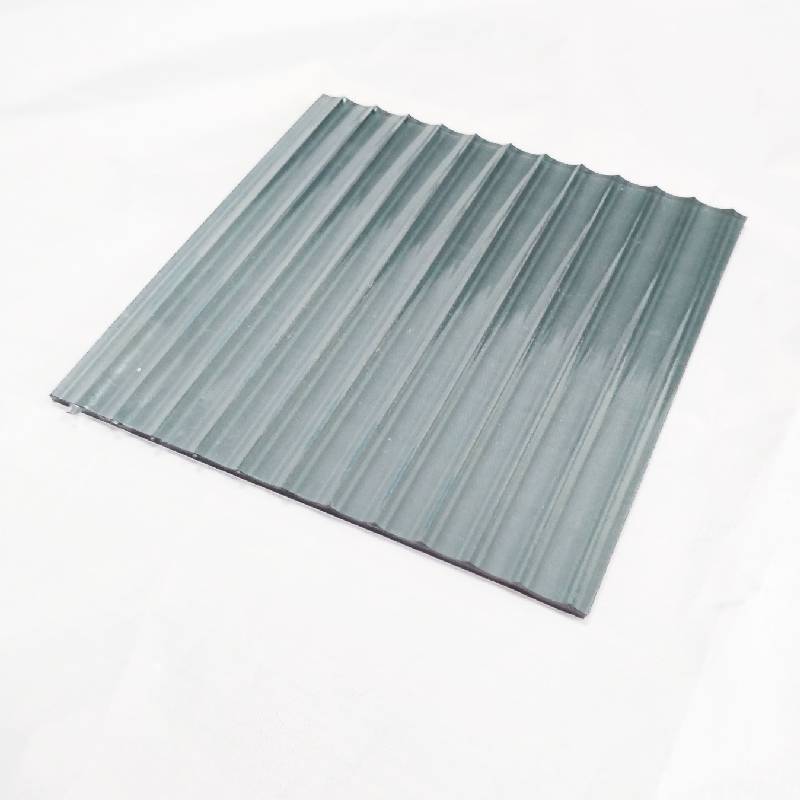The Process of Making Tempered Glass
Tempered glass, also known as toughened glass, is a popular choice in various applications due to its strength, safety features, and aesthetic appeal. The process of making tempered glass involves several critical steps that enhance its durability by altering its physical properties. This article will delve into the stages of tempered glass production, its benefits, and its myriad uses.
The Manufacturing Process
The production of tempered glass begins with the selection of high-quality raw materials, typically soda-lime glass. This type of glass is favored for its excellent clarity and workability. Once the raw materials are gathered, they are melted in a furnace at temperatures exceeding 1,500 degrees Fahrenheit (800 degrees Celsius). This phase ensures a uniform composition, free from impurities.
After melting, the molten glass is shaped into flat sheets, often through a process known as floating. In the float glass method, the molten glass is poured onto a bed of molten tin, where it spreads out evenly to form flat sheets. Once the sheets cool down to a manageable temperature, they are cut into the desired dimensions.
Next, the glass sheets undergo an annealing process, which allows them to cool gradually to relieve internal stress. However, this step is just the precursor to the transformative aspect of glass production – the tempering phase.
Tempering Process
The tempering process is where the glass truly gains its strength. The cooled glass sheets are moved to an oven, where they are heated to temperatures ranging from 1,100 to 1,300 degrees Fahrenheit (600 to 700 degrees Celsius). This high-temperature environment allows the glass to reach a point where it becomes malleable but not liquid.
After achieving the desired temperature, the glass is rapidly cooled in a process known as quenching. High-pressure jets of cool air are directed onto the surface of the glass, causing the outer layers to cool quickly while the interior remains at a higher temperature for a short period. This rapid cooling process creates compressive stresses on the surface of the glass and tensile stresses on the inside, resulting in a dramatically increased strength.
making tempered glass
The end result is tempered glass that is five to six times stronger than standard glass of the same thickness. Additionally, if tempered glass breaks, it shatters into small, blunt pieces rather than sharp shards, reducing the risk of injury.
Benefits of Tempered Glass
The advantages of tempered glass make it a preferred option in numerous settings. Its enhanced strength makes it ideal for applications such as shower doors, glass railings, and storefronts, where safety is a concern. The thermal resistance of tempered glass also allows it to be used in environments exposed to high temperatures, such as oven doors and glass facades of buildings.
Moreover, tempered glass has excellent clarity and can be coated or tinted for aesthetic purposes. It can also be laminated for added safety or sound insulation, broadening its application potential. The ability to customize tempered glass for different uses without compromising its structural integrity is another reason for its popularity.
Applications of Tempered Glass
Tempered glass is used in a wide array of industries, including construction, automotive, and appliances. In residential and commercial buildings, tempered glass is utilized in windows, curtain walls, and facades due to its safety features and aesthetic appeal. In the automotive sector, tempered glass is commonly used for side and rear windows as it offers enhanced protection for passengers.
Moreover, tempered glass is an integral part of everyday appliances like stovetops and ovens, where it can withstand heat and thermal stress. The evolving design trends also see tempered glass being employed in furniture and decorative elements, merging style with functionality.
Conclusion
The process of making tempered glass involves meticulous steps that yield a product known for its superior strength and safety. Through the combination of heating and rapid cooling, glass transforms into a durable material suitable for diverse applications. As industries continue to innovate, the demand for tempered glass is likely to grow, paving the way for new uses and advancements in design. Whether in architecture, automotive design, or home appliances, tempered glass stands out as a testament to engineering excellence, underscoring its significance in modern society.
 Afrikaans
Afrikaans  Albanian
Albanian  Amharic
Amharic  Arabic
Arabic  Armenian
Armenian  Azerbaijani
Azerbaijani  Basque
Basque  Belarusian
Belarusian  Bengali
Bengali  Bosnian
Bosnian  Bulgarian
Bulgarian  Catalan
Catalan  Cebuano
Cebuano  Corsican
Corsican  Croatian
Croatian  Czech
Czech  Danish
Danish  Dutch
Dutch  English
English  Esperanto
Esperanto  Estonian
Estonian  Finnish
Finnish  French
French  Frisian
Frisian  Galician
Galician  Georgian
Georgian  German
German  Greek
Greek  Gujarati
Gujarati  Haitian Creole
Haitian Creole  hausa
hausa  hawaiian
hawaiian  Hebrew
Hebrew  Hindi
Hindi  Miao
Miao  Hungarian
Hungarian  Icelandic
Icelandic  igbo
igbo  Indonesian
Indonesian  irish
irish  Italian
Italian  Japanese
Japanese  Javanese
Javanese  Kannada
Kannada  kazakh
kazakh  Khmer
Khmer  Rwandese
Rwandese  Korean
Korean  Kurdish
Kurdish  Kyrgyz
Kyrgyz  Lao
Lao  Latin
Latin  Latvian
Latvian  Lithuanian
Lithuanian  Luxembourgish
Luxembourgish  Macedonian
Macedonian  Malgashi
Malgashi  Malay
Malay  Malayalam
Malayalam  Maltese
Maltese  Maori
Maori  Marathi
Marathi  Mongolian
Mongolian  Myanmar
Myanmar  Nepali
Nepali  Norwegian
Norwegian  Norwegian
Norwegian  Occitan
Occitan  Pashto
Pashto  Persian
Persian  Polish
Polish  Portuguese
Portuguese  Punjabi
Punjabi  Romanian
Romanian  Russian
Russian  Samoan
Samoan  Scottish Gaelic
Scottish Gaelic  Serbian
Serbian  Sesotho
Sesotho  Shona
Shona  Sindhi
Sindhi  Sinhala
Sinhala  Slovak
Slovak  Slovenian
Slovenian  Somali
Somali  Spanish
Spanish  Sundanese
Sundanese  Swahili
Swahili  Swedish
Swedish  Tagalog
Tagalog  Tajik
Tajik  Tamil
Tamil  Tatar
Tatar  Telugu
Telugu  Thai
Thai  Turkish
Turkish  Turkmen
Turkmen  Ukrainian
Ukrainian  Urdu
Urdu  Uighur
Uighur  Uzbek
Uzbek  Vietnamese
Vietnamese  Welsh
Welsh  Bantu
Bantu  Yiddish
Yiddish  Yoruba
Yoruba  Zulu
Zulu 

